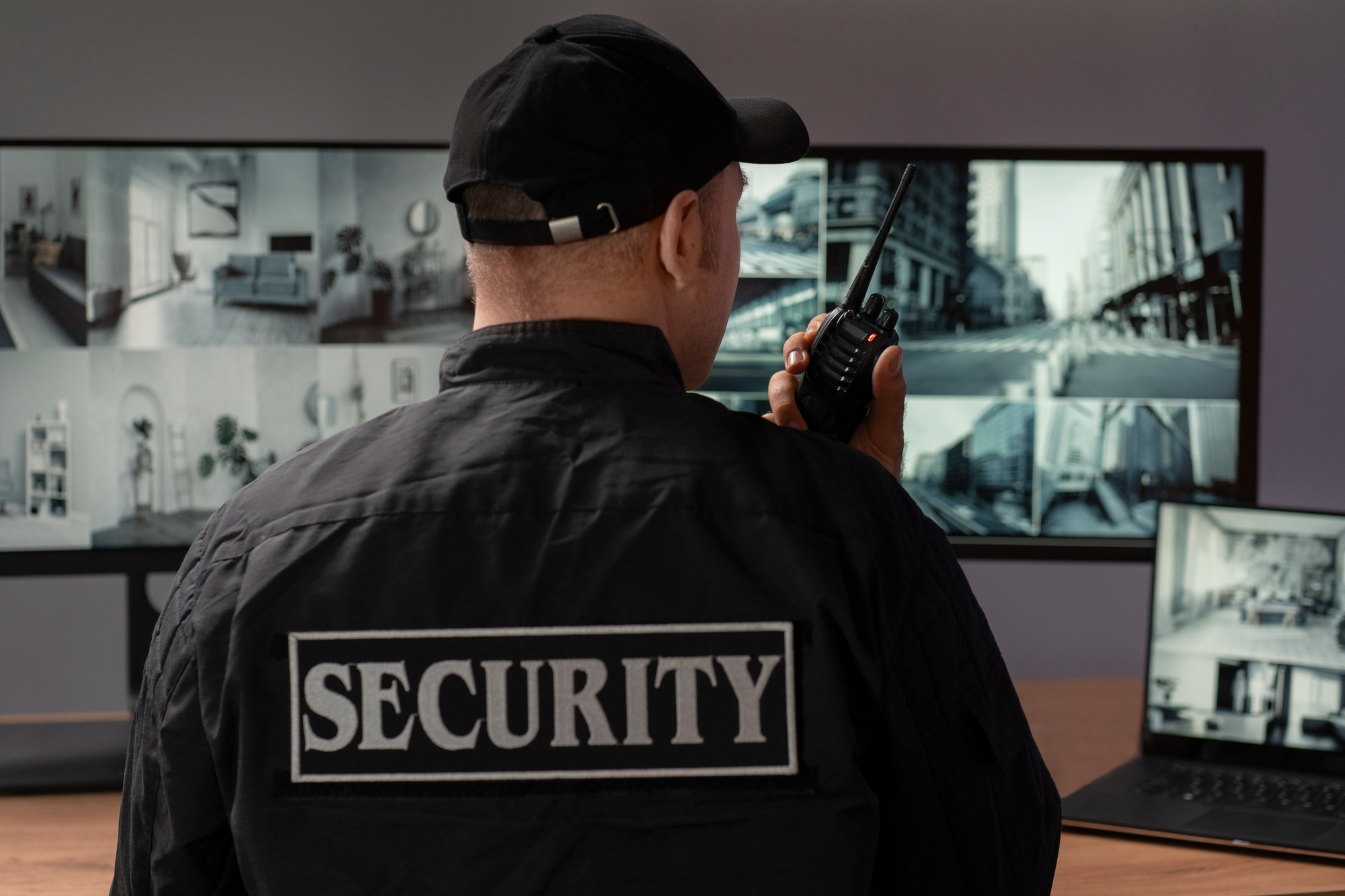Security

Security
Best Security Company in Bangalore
Where safety and protection are concerned, the selection of the Best Security Company in Bangalore will be the key. Untrustworthy security is no longer a luxury in the city life that is busy, frantic, and hectic, but a necessity. NSS Guarding and Facility Management Pvt Ltd offers professional and trusted security services, covering residential security, commercial security services, event security, and surveillance.
Comprehensive Solutions from a Leading Security Company in Bangalore
Security is no longer just about posting guards at entry points; it now requires a balanced combination of manpower, technology, and strategy. As one of the Top Security Agencies in Bangalore, NSS Guarding & Facility Management Pvt Ltd provides a complete range of solutions such as access control systems, surveillance with 24/7 monitoring, event security and crowd management, armed and unarmed security personnel, mobile patrols, and quick response teams.
We also specialise in residential, commercial security services, ensuring protection for people, property, and assets. Since every environment has its own unique challenges, our Professional Security Services Bangalore are carefully customised to suit the specific requirements of apartments, gated communities, IT parks, manufacturing hubs, retail outlets, and large corporate establishments.
Trusted and Experienced Security Company in Bangalore
With more than two decades of experience, NSS Guarding & Facility Management Pvt Ltd has built a strong reputation as one of the most trusted and dependable security companies in Bangalore.
Our licensed and trained security personnel undergo strict background verification and comprehensive training in vital areas such as emergency response, conflict management, patrolling and surveillance, fire safety awareness, and customer service interaction.
This thorough preparation ensures that every guard is not only skilled in handling security challenges but also serves as a reliable and reassuring presence for residents, employees, and visitors.

Why Choose Us
Why Choose NSS Guarding & Facility Management Pvt Ltd?
Here’s why NSS is recognised as one of the Best Security Companies in Bangalore:

Professional Personnel
Trained, licensed security staff skilled in handling threats, risks, emergencies, ensuring safety everywhere, every time.

Customized Security
Plans
Tailored strategies created for each site, addressing specific risks, vulnerabilities, and client security requirements effectively.

Round-the-Clock
Monitoring
Dedicated 24/7 vigilance team ensures safety during day, night, events, and all critical security operations.

Use of Advanced
Technology
CCTV surveillance, GPS tracking, and modern tools integrated to boost efficiency, safety, and control.

Compliance and Legal Standards
Adheres strictly to labour laws, PF, ESI, and regulations, offering complete client trust and assurance.

Excellent Client
Support
Account managers ensure transparent communication, fast problem resolution, and seamless service delivery for clients.
The Role of a Security Company in Bangalore in Today’s World
As India’s Silicon Valley, Bangalore is a hub of corporate houses, startups, residential complexes, and large events. The need for agile, technology-driven, and people-focused security is higher than ever. A modern Security Guard Services in Bangalore must go beyond basic guarding. It should integrate 24/7 monitoring, security management, corporate espionage prevention, and advanced surveillance systems. NSS Guarding & Facility Management Pvt Ltd has consistently adapted to these dynamic needs. Their ability to blend traditional guarding with technology-driven security measures makes them a preferred partner for both large corporations and small businesses alike.
Armed & Unarmed Guards
Electronic Surveillance (CCTV Inst & Monit)
Mobile Patrol
Services
Event Security
Management
Fire Safety
Personnel
Facility Management & Housekeeping
Get in Touch with the Best Security
Company in Bangalore
n need of a trusted partner to stay and guard your premises, events, or place of work, NSS Guarding and Facility Management Pvt Ltd is there to assist. We are the tallest in the list of the Best Security Company in Bangalore since we have a proven track record, transparent pricing, and very satisfied clients. Select NSS today and enjoy security services that are founded on trust, experience, and excellence.
Google Review
Posted onTrustindex verifies that the original source of the review is Google. Very good support Security and Facilities management. Thanks NSS teamPosted onTrustindex verifies that the original source of the review is Google. Good services at Kristal citrinePosted onTrustindex verifies that the original source of the review is Google. Good service 👍Posted onTrustindex verifies that the original source of the review is Google. good servicesPosted onTrustindex verifies that the original source of the review is Google. Very good security & facility management services...Thanks DeveshPosted onTrustindex verifies that the original source of the review is Google. Always support Good security services
